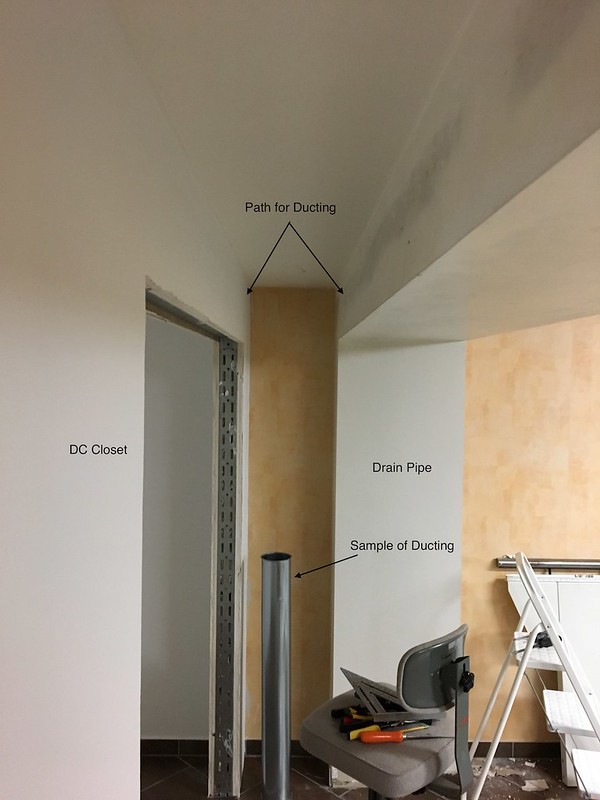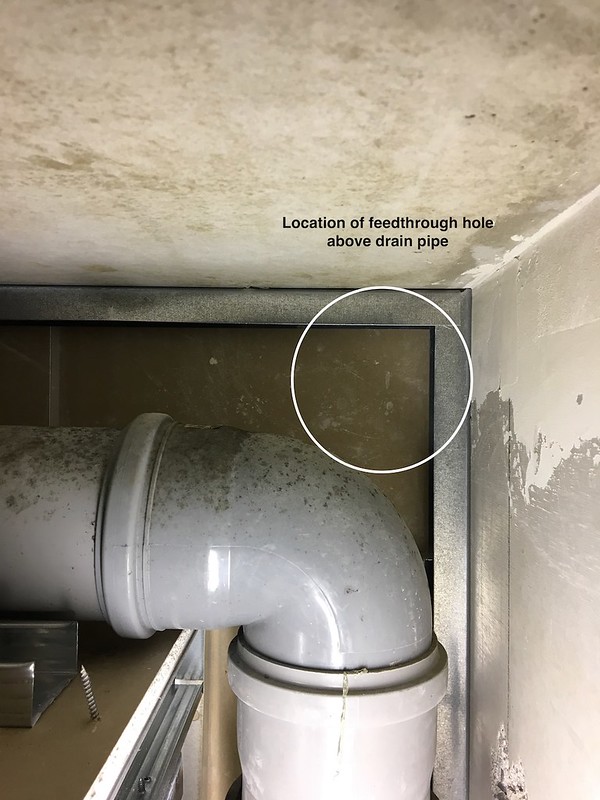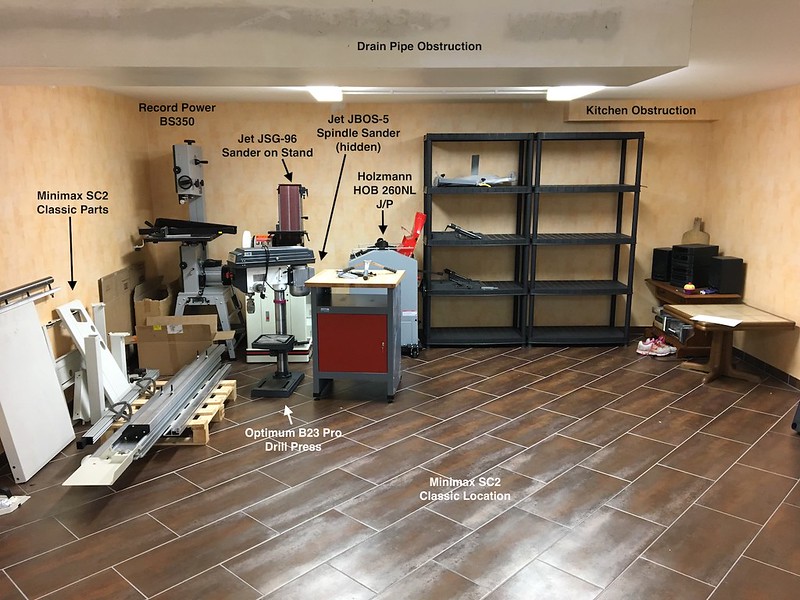I am in the process of building my basement workshop and have a blank slate for the dust collection system. The dividing wall that separates the shop from the rest of the semi-finished basement is in, but the standard metal door will not be delivered and installed until the middle of August (it's a German thing). The main shop is 5m x 4.75m (16.4 x 15.6 feet) and has a separate closet that is 1m x 2m (3.3 x 6.6 feet), for the dust collection and air compressor. The double doors for the closet have to be cut down to clear the drain pipe obstruction that runs across the ceiling, and will be delivered and installed sometime in late September (yes, more of that German thing). I have plenty of free space to work in and want to install the dust collection ducting and power distribution now. The installation of the cabinets, shelving, and benches, as well as final placement of the equipment will be done later.
I have a 2HP dust collector that I will reconfigure and combine with an Oneida Super Dust Deputy (the metal version) and a pair of Wynn filters. However, I have still not made up my mind about the location of the 120mm metal ducting that will go around three walls of the shop. All of the shop installations I see have the main ducting mounted high, with either rigid down tubes along the wall ending at blast gates near the floor, or blast gates mounted high, with flexible tubing going down the wall to the equipment. Is this done because in most cases the dust collection system was added after the shop was built?
Is there a reason the main ducting could not be mounted low on the wall, with the only rise up the wall at the dust collection equipment? In the two basic scenarios I drew, the horizontal and vertical travel for chips and dust were the same for each piece of equipment. The difference was the cost of material for the ducting, with the high version being more expensive. Does the location of the point where the chips and dust rise make a difference? In my simple way of thinking, the particulate has an opportunity to increase velocity if it is not trying to overcome gravity at the start of the journey to the cyclone.
Given the opportunity to start over, would anyone reconsider the location and routing of the dust collection ducting? I welcome all comments and suggestions, as I don't want to make major changes to the system after it's installed.
To avoid starting another thread, I would appreciate opinions on the air compressor. I don't know what would be a reasonable size for small nail and brad guns. I don't intend on painting or sand blasting in the shop, but want the opportunity to use a few air tools. I have plenty of room in the closet for a compressor, and will have a 16A 400V 3-phase receptacle for it and the dust collector. What is a reasonable size for the compressor and air tank?




 Reply With Quote
Reply With Quote












